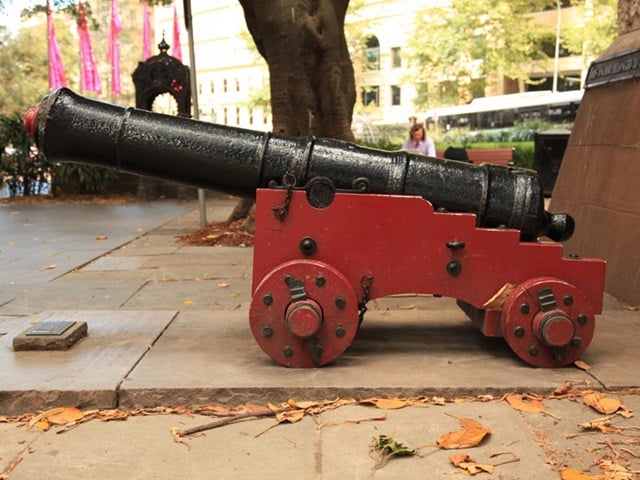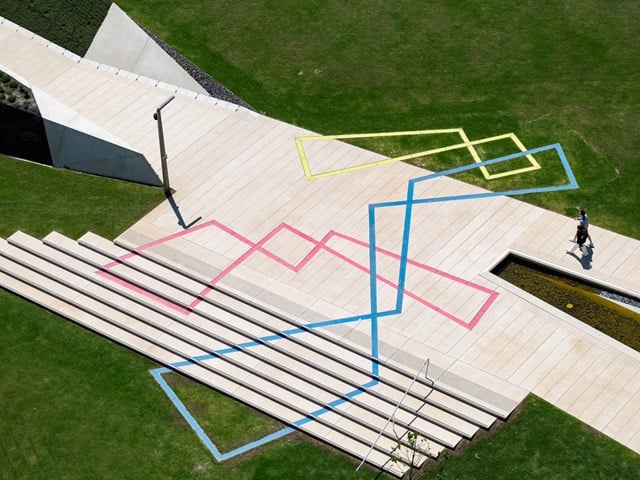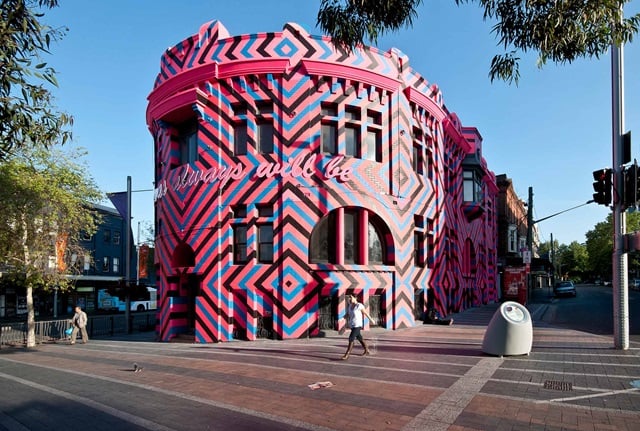


A sailor and soldier stand guard at either end of a granite tomb commemorating Australians who died in service during World War 1.
Artwork description
The Sydney Cenotaph in Martin Place was commissioned to commemorate the Australian soldiers and sailors who died in service during World War 1. It was sculpted by Sir Edgar Bertram Mackennal and unveiled on 21 February 1929.
The cenotaph consists of 2 bronze figures, one a soldier, the other a sailor, standing guard at each end of a large granite tomb that represents the cenotaph. A cenotaph is defined as an empty tomb, a sepulchral monument erected in honour of those drowned at sea, killed in battle and otherwise lost.
The Sydney Cenotaph has represented a focal point for diverse groups since its erection and has had a central role in the expression of varied interpretations of war.
Artist
Sculptor Sir Edgar Bertram Mackennal (1863–1931) was the most successful Australian artist of his time, and is still arguably the best known of Australia’s figurative sculptors. Born in Melbourne, he studied at the National Gallery School and Victorian Academy, and in 1883 at the Royal Academy and British Museum in London.
Working mostly in Europe, from 1882 Mackennal executed many private works and public monuments, and with the patronage of King George V became a leading civic sculptor in Britain. He was the first Australian to be elected an associate of the British Royal Academy, the only Australian to be elected to full Royal Academy membership, and the first to be knighted.







